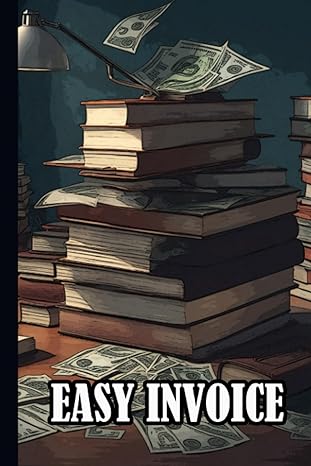Question
1. Which of the following identifies the proper order of the accounting cycle? A. Analyze, Journalize, Unadjusted Trial Balance B. Analyze, Post, Unadjusted Trial Balance
1. Which of the following identifies the proper order of the accounting cycle?
A. Analyze, Journalize, Unadjusted Trial Balance
B. Analyze, Post, Unadjusted Trial Balance
C. Journalize, Post, Adjusted Trial Balance
D. Unadjusted Trial Balance, Adjusted Trial Balance, Close
E. Adjusted Trial Balance, Adjustments, Financial Statements
2. Interim financial statements refer to financial reports:
A. That cover less than one year, usually spanning one, three or six-month periods
B. That are prepared before any adjustments have been recorded
C. That show the assets above the liabilities and the liabilities above the equity
D. Where revenues are reported on the income statement when cash is received and expenses are reported when cash is paid
E. Where the adjustment process is used to assign revenues to the periods in which they are earned and to match expenses with revenues
3. The accounting principle that requires revenue to be reported when earned is the:
A. Matching principle
B. Revenue recognition principle
C. Time period principle
D. Accrual reporting principle
E. Going-concern principle
4. Adjusting entries:
A. Affect only income statement accounts
B. Affect only balance sheet accounts
C. Affect both income statement and balance sheet accounts
D. Affect only cash flow statement accounts
E. Affect only equity accounts
5. The system of preparing financial statements based on recognizing revenues when the cash is received and reporting expenses when the cash is paid is called:
A. Accrual basis accounting
B. Operating cycle accounting
C. Cash basis accounting
D. Revenue recognition accounting
E. Current basis accounting
6. If throughout an accounting period the fees for legal services paid in advance by clients are recorded in an account called Unearned Legal Fees, the end-of-period adjusting entry to record the portion of those fees that has been earned is:
A. Debit Cash and credit Legal Fees Earned
B. Debit Cash and credit Unearned Legal Fees
C. Debit Unearned Legal Fees and credit Legal Fees Earned
D. Debit Legal Fees Earned and credit Unearned Legal Fees
E. Debit Unearned Legal Fees and credit Accounts Receivable
7. A company had no office supplies available at the beginning of the year. During the year, the company purchased $250 worth of office supplies. On December 31, $75 worth of office supplies remained. How much should the company report as office supplies expense for the year? A. $75 B. $125 C. $175 D. $250 E. $325 8. On January 1 a company purchased a five-year insurance policy for $1,800 with coverage starting immediately. If the purchase was recorded in the Prepaid Insurance account and the company records adjustments only at year-end, the adjusting entry at the end of the first year is:
A. Debit Prepaid Insurance, $1,800; credit Cash, $1,800
B. Debit Prepaid Insurance, $1,440; credit Insurance Expense, $1,440
C. Debit Prepaid Insurance, $360; credit Insurance Expense, $360
D. Debit Insurance Expense, $360; credit Prepaid Insurance, $360
E. Debit Insurance Expense, $360; credit Prepaid Insurance, $1,440
9. Unearned revenue is reported on the financial statements as:
A. A revenue on the balance sheet
B. A liability on the balance sheet
C. An unearned revenue on the income statement
D. An asset on the balance sheet
E. An operating activity on the statement of cash flows
10. Which of the following assets is not depreciated?
A. Store fixtures
B. Computers
C. Land
D. Buildings
E. Vehicles
11. On April 30, 2011, a three-year insurance policy was purchased for $18,000 with coverage to begin immediately. What is the amount of insurance expense that would appear on the company's income statement for the year ended December 31, 2011? A. $500 B. $4,000 C. $6,000 D. $14,000 E. $18,000 12. Expenses incurred but unpaid that are recorded during the adjusting process with a debit to an expense and a credit to a liability are:
A. Intangible expenses
B. Prepaid expenses
C. Unearned expenses
D. Net expenses
E. Accrued expenses
13 The difference between the cost of an asset and the accumulated depreciation for that asset is called
A. Depreciation Expense
B. Unearned Depreciation
C. Prepaid Depreciation
D. Depreciation Value
E. Book Value
14. A company purchased a new truck at a cost of $42,000 on July 1, 2011. The truck is estimated to have a useful life of 6 years and a salvage value of $3,000. How much depreciation expense will be recorded for the truck for the year ended December 31, 2011?
A. $3,250
B. $3,500
C. $4,000
D. $6,500
E. $7,000
15. A company's Office Supplies account shows a beginning balance of $600 and an ending balance of $400. If office supplies expense for the year is $3,100, what amount of office supplies was purchased during the period?
A. $2,700
B. $2,900
C. $3,300
D. $3,500
E. $3,700
Step by Step Solution
There are 3 Steps involved in it
Step: 1

Get Instant Access to Expert-Tailored Solutions
See step-by-step solutions with expert insights and AI powered tools for academic success
Step: 2

Step: 3

Ace Your Homework with AI
Get the answers you need in no time with our AI-driven, step-by-step assistance
Get Started


